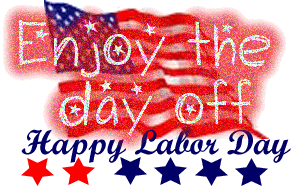
From Wikipedia, this article is about the holiday in the United States. Labor Day is a United States federal holiday observed on the first Monday in September. The holiday originated in 1882 as the Central Labor Union (of New York City) sought to create "a day off for the working citizens".
Congress made Labor Day a federal holiday in 1894.[1] All fifty states have made Labor Day a state holiday. Traditionally, Labor Day is celebrated by most Americans as the symbolic end of the summer.
Labor Day has been celebrated on the first Monday in September in the United States since the 1880s. The form for the celebration of Labor Day was outlined in the first proposal of the holiday—a street parade to exhibit to the public "the strength and esprit de corps of the trade and labor organizations," followed by a festival for the workers and their families. This became the pattern for Labor Day celebrations. Speeches by prominent men and women were introduced later, as more emphasis was placed upon the economic and civil significance of the holiday. Still later, by a resolution of the American Federation of Labor convention of 1909, the Sunday preceding Labor Day was adopted as Labor Sunday and dedicated to the spiritual and educational aspects of the labor movement.
Today, Labor Day is often regarded as a day of rest and, compared to the May 1 Labour Day celebrations in most countries, parades, speeches or political demonstrations are more low-key, although especially in election years, events held by labor organizations often feature political themes and appearances by candidates for office.
Congress made Labor Day a federal holiday in 1894.[1] All fifty states have made Labor Day a state holiday. Traditionally, Labor Day is celebrated by most Americans as the symbolic end of the summer.
Labor Day has been celebrated on the first Monday in September in the United States since the 1880s. The form for the celebration of Labor Day was outlined in the first proposal of the holiday—a street parade to exhibit to the public "the strength and esprit de corps of the trade and labor organizations," followed by a festival for the workers and their families. This became the pattern for Labor Day celebrations. Speeches by prominent men and women were introduced later, as more emphasis was placed upon the economic and civil significance of the holiday. Still later, by a resolution of the American Federation of Labor convention of 1909, the Sunday preceding Labor Day was adopted as Labor Sunday and dedicated to the spiritual and educational aspects of the labor movement.
Today, Labor Day is often regarded as a day of rest and, compared to the May 1 Labour Day celebrations in most countries, parades, speeches or political demonstrations are more low-key, although especially in election years, events held by labor organizations often feature political themes and appearances by candidates for office.
Forms of celebration include picnics, barbecues, fireworks displays, water sports, and public art events. Families with school-age children take it as the last chance to travel before the end of summer. Some teenagers and young adults view it as the last weekend for parties before returning to school. However, as of late, schools have begun well before Labor Day, as early as July 24th in many urban districts, including major southern cities in the United States such as Atlanta, Miami, and Los Angeles.





























2 comments:
yeah, we have Labor day but thisis Canada so it is Labour Day. the difference i don't really know anymore. we just have way too many holidays... that is just me thinking though.
LOL!!! If they are holidays that you get the day off...there are not too many. But, it they are just remember and work anyway, then yes, I agree.
Thank you for visiting my blog.
Post a Comment